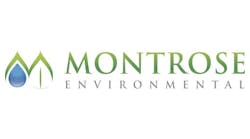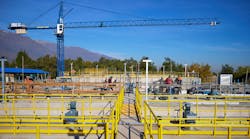Opportunity
New York State officials performed environmental testing at a local airport and an adjacent military base known for their historical use of Aqueous Film Forming Foam (AFFF). Widespread contamination was evident in streams, wetlands, and lakes that served as the area’s primary water supply. Furthermore, a public health monitoring assessment showed that blood-PFAS levels in marine life in the affected areas were significantly higher than national levels.
Challenge
To resolve the immediate threat, officials issued a fish advisory for the surrounding region, and an alternative PFAS clean water source was provided for the City. A granulated activated carbon (GAC) system was installed by the State. However, the city required greater expertise in PFAS contamination analysis and remediation to ensure the implementation of a more thorough solution. Montrose was sought out to evaluate the effectiveness of the GAC system, critically review investigation data on the crisis, and provide immediate recommendations for remedial action.
Solution
Montrose quickly deployed investigators, remediators, and chemists to support the resolution of the widespread problem. Montrose evaluated the ability of the GAC treatment system to treat these compounds and provide recommendations on the long-term operations and maintenance of the system. By analyzing the bench-scale and investigation testing date, Montrose was able to pinpoint additional sources of contamination, and identify areas where storm water outfalls contained PFAS. The Montrose team also reviewed numerous State Reports and Plans and developed recommendations for additional investigations and interim remedial measures. Montrose recommended infrastructure modifications to reduce and re-direct storm water flow and remove sediment from the nearby retention basin and also recommended the implementation of additional interim PFAS treatment systems to mitigate contamination in local drinking water reservoirs.
Editor's Note: Scranton Gillette Communications and the SGC Water Group are not liable for the accuracy, efficacy and validity of the claims made in this piece. The views expressed in this content do not reflect the position of the editorial teams of Water & Wastes Digest, Water Quality Products and Storm Water Solutions.



